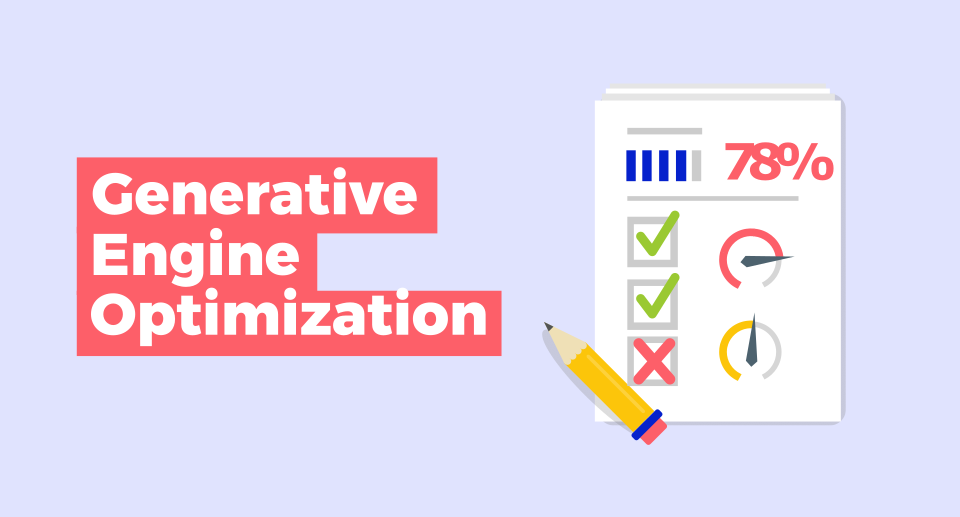These past few months, a seismic shift is happening in how people search and discover information online. While traditional SEO is still relevant, the emergence of GEO cannot be overlooked. If you’re wondering what GEO is and why would you need it to promote your business, read on:
The Era of Generative Engine Optimization (GEO)
You’ve probably heard about AI tools like ChatGPT and Google’s AI Overviews that give you direct answers instead of just a list of links. This means we need a new way to think about how people find information online, and that’s where Generative Engine Optimization comes in.
What Exactly is GEO?
According to the best GEO agency San Francisco, GEO is about making your website’s content easier for these AI search engines to understand and use, so that your brand shows up in the answers they give. It’s not just about getting clicks to your website anymore, it’s more about being seen as a helpful and trusted source in the AI’s responses. The main goal of GEO is to increase your website’s visibility, bring in the right kind of visitors, and turn them into fans of your brand.
So, What You Need to Do to Get Started with GEO:
Here are some generative engine optimization strategies, based on what’s working now:
Make Sure AI Can Read Your Website: Some websites block AI from looking at their content. If you write guest posts on other sites (which is a good idea for SEO), check if those sites allow AI to crawl their pages. Look for rules in their “robots.txt” file that might block “GPTBot” or other AI crawlers.
Team Up with Big Names: You might have heard of E-E-A-T (experience, expertise, authoritativeness, and trustworthiness) for regular Google search. While AI doesn’t use it exactly the same way, getting your content on websites with a lot of authority still matters.
Bring Back the Lists: Believe it or not, AI seems to really like lists, especially “top 10” listicles. If you want to recommend products, don’t be afraid to put them in a list. This can be a surprisingly effective way to get noticed by AI.
Match Your Content to What the Experts Say: This one takes a bit more work but can have a big impact. AI learns from reputable sources, so your content should fit in with that kind of information. You should try balancing human creativity with AI assistance in SEO.
- Look at many sources: Read top reports, studies, and expert opinions.
- Add your own spin: Come up with your own unique ideas based on what you’ve learned.
- Use your own data: If you have original research, case studies, or your own experiences, include them to make your content more believable.
- Quote the experts (or be one): Interview thought leaders or share your own expert insights.
How is GEO Different from Regular SEO?
While both GEO and SEO want to make your content visible online, they focus on different things. A generative engine optimization agency explains more:
- Who they target: SEO is for regular search engines like Google, GEO is for AI like ChatGPT.
- How they respond: SEO tries to get you a high ranking in a list of links, GEO aims to get your content included in the AI’s direct answer.
- Understanding content: SEO uses keywords, GEO needs your content to be clear and make sense in context for the AI.
- Putting information together: SEO wants your page to rank well, GEO looks at how AI combines information from different places.
- Knowing what people want: SEO matches keywords to searches, GEO uses advanced AI to really understand what the user is asking.
- Keeping up with changes: SEO adapts to search engine updates, GEO has to adapt to how AI itself changes.
- How content looks: SEO has standard formats, GEO likes structured data and content that’s easy for AI to understand.
- What research they do: SEO looks at keywords, GEO looks at how AI creates answers and what sources it uses.
- How they measure success: SEO looks at rankings and traffic, GEO looks at traffic from AI and if your content is being cited.
You Should Still Do SEO!
It’s important to know that GEO and SEO work together. Good SEO practices often help with GEO. You should aim for a single content plan that works for both regular search and AI. This means making sure your content is high-quality, uses the right words (for both humans and AI), is technically sound, and that you’re always learning and adapting. Get the assistance of generative engine optimization services as well.
Read: Google’s Fresh Look at AI Content.
High Risk, High Reward:
GEO is changing how people find information online. Getting your content ready for AI, building strong partnerships, and getting strategic mentions are becoming key to being seen. While there are risks, the opportunities are big. It’s a good idea to start experimenting with GEO now and be ready to adapt as AI continues to develop. Questions? Talk to our generative engine optimization experts at WSIMLogiX today.

